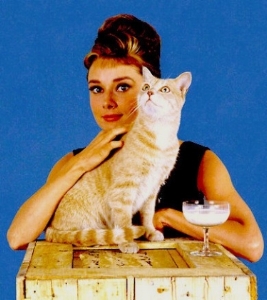When Ben Hur most recently appeared before the camera, it was the fifth time a movie had been made of General Lew Wallace’s Tale of the Christ. In all five of the Ben Hurs, the stirring chariot race is the defining scene. Not a stone of Herod’s Hippodrome in Jerusalem, the historical setting of the chariot race in Wallace’s fiction, has been found. No matter. The ancient race-track stadium is bright and bold in our collective imagination. Pacing and spectacle…wrecks and danger…unmitigated excess and excitement…and the glory of God crowd the arena.
The 2016 producers requested use of the Circus Maximus in Rome to shoot the film’s signature chariot race; they were denied. So they set about filming the race on a partial arena constructed outside Rome for the shoot and used drones, GoPro cameras, post production special effects, CGI (Computer Generated Images), blank sound stages, and green screen to re-create the race.
As near Rome’s ancient Circus Maximus, Cinecittà (Cinema City), Rome’s massive film studio hub, was constructed by Mussolini in 1937 as Europe’s biggest complex to revive the dimming Italian film industry and as an organ of propoganda. By the 1960s Cinecittà had been dubbed “Hollywood on the Tiber” because it was the site of so many American productions. In fact, many films set in ancient Rome were shot at Cinecittà including Quo Vadis (1951), the runaway production of Cleopatra (1963), and of course, the most honored Academy Award winning film of all time, the 1959 version of Ben Hur (There is an 11-Oscar-winning three-way tie among Ben Hur, Titanic [1997], and The Lord of the Rings: The Return of the King [2003]).
After determining that a Rome “more like Rome than Rome” couldn’t be found in some other European city for less money, and ancient Rome couldn’t be found in the Roman ruins just outside the studio’s gate, director William Wyler approved more than 300 set designs and built his ancient world on more than 340 acres at the Cinecittà Studios. The largest of these sets, and the largest set ever built to that time, the chariot arena, was a 2,000-by-65-foot set that covered 18 acres. Although tour buses visited the set to observe the spectacle of the chariot race shoot every hour, matte shots would obliterate the reality of modern day Rome just outside the studio gates. So too, matte shots completing the 1926 race track set had kept the new Hollywoodland sign unseen behind the arena. 1000 extras, more than 100 horses, and Hollywood’s beautiful people were among the race’s spectators. The 1959 race’s similarity to the silent epic’s race is no mere coincidence: the young William Wyler was among the army of assistant directors who had engineered shooting the silent era race on 42 cameras on the MGM back lot.
The studio replicates reality to become settings of movies as well as making the movie in the studio is a reality, as such…the studio is the first Virtual Reality. The world outside the studio gates is re-created by and at the studio—from Ben Hur’s Hippodrome to the Star Wars franchise's galaxy far, far away; while in other movies, the plot takes place set within The Dream Factory—studio sound stages and back lots are the setting of Day for Night (1973), Sunset Blvd (1950), The Bad and the Beautiful (1952), The Player (1992), and many other films including this year’s LaLaLand. In this Damien Chazelle musical, the happy ending is a choreographed montage of unreal experiences, including walking along the Seine on a painted studio set of Paris.
The Cinecittà Studios’ sound stage and back lot continue to prove a provocative passport for our imaginations. In 2016 Karl Lagerfeld staged Chanel’s cinematic runway show at Rome’s Cinecittà Studios. Lagerfeld’s invited celebrity guests began the evening with cocktails on the “Antica Roma” (Ancient Rome Set). The fashion show was staged on Federico Fellini’s favorite, Sound Stage 5, used for Satyricon (1969), Fellini’s tale of decadent, ancient Rome. A tribute to the style of Paris, Lagerfeld’s Chanel fashion show was staged with statuesque mannequins and louche male models looping around a Paris Metro Station set. It was a world of absolute glamor. The couture models round the sound stage—the celebrity spectators can’t be sure where to look next…excess stalks their track; excitement stokes their imagination.




























